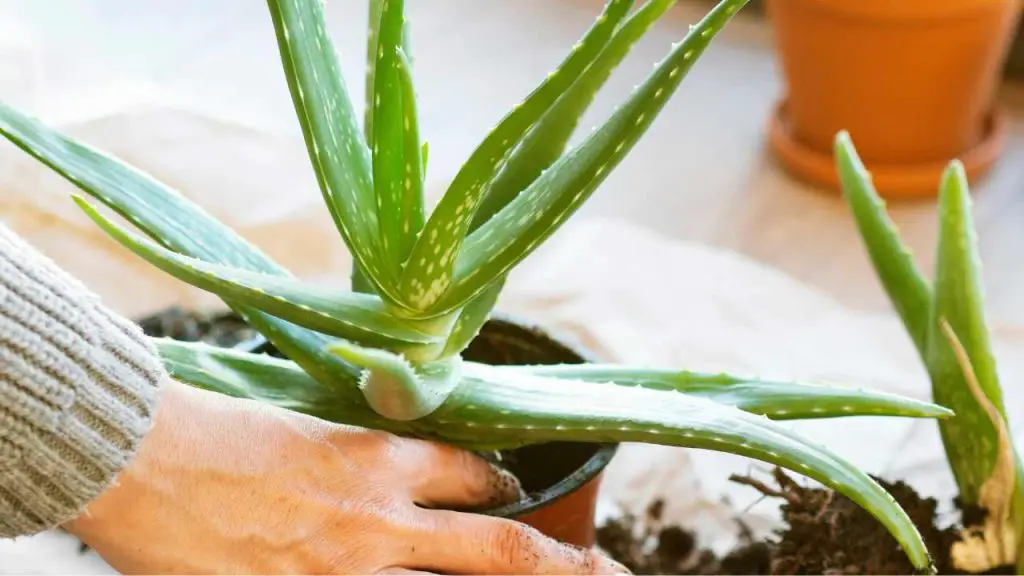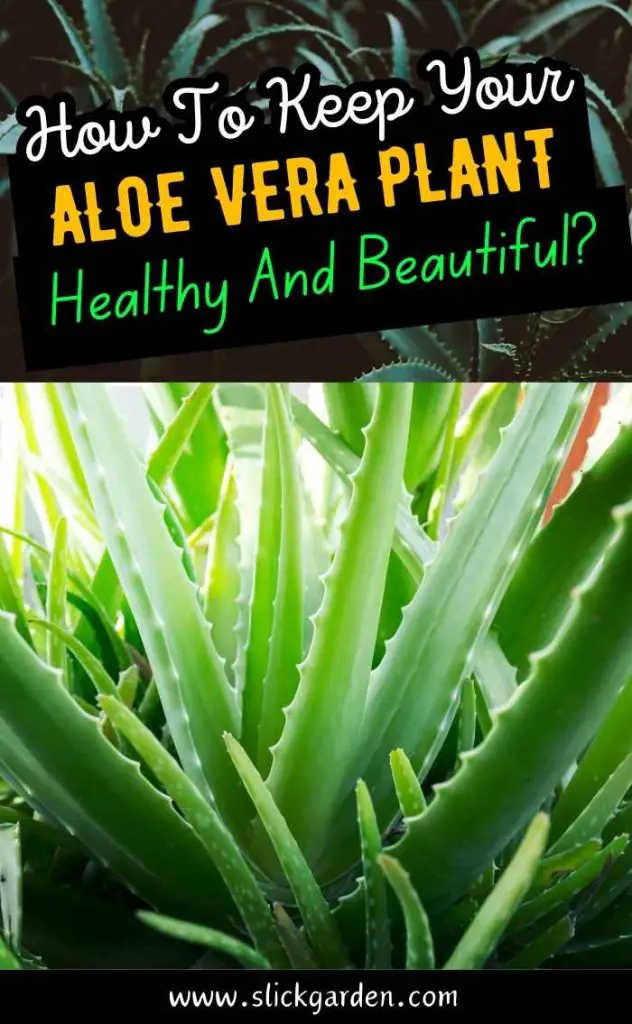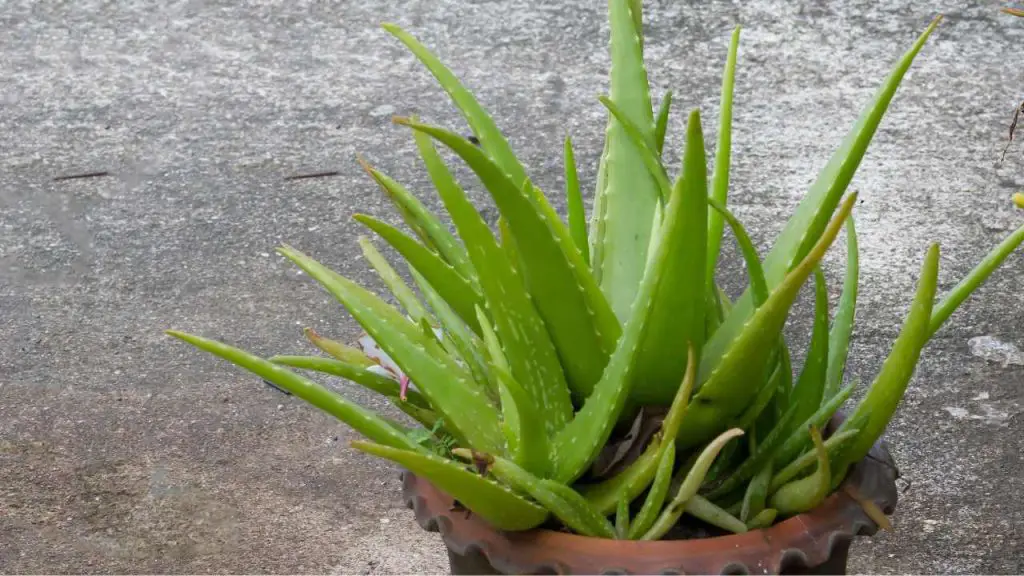Native to arid areas, aloe Vera is a succulent plant that is prized for its architectural appearance as well as its many health and skincare advantages.
It is suitable for both novice and seasoned plant enthusiasts due to its low maintenance requirements and versatility, as it thrives in dry, sunny environments.

Aloe Vera’s appeal is increased by its capacity to eliminate pollutants and purify indoor air. Aloe Vera is renowned for its medicinal qualities and aesthetic appeal. Its gel is utilized in home cures for minor cuts, burns, and skin irritation.
Choosing the Right Aloe Vera Plant
Make sure the aloe Vera plant you select from a nursery exhibits signs of vitality and health. Seek a symmetrical growth pattern, compact, well-formed shape, and firm, plump leaves. To learn about the plant’s past care and present condition, ask questions.
Look for firm, plump, and firm leaves on an aloe Vera plant to ensure that it is healthy. They ought to be a vivid shade of green, devoid of any brown or yellow patches that might be signs of illness, vermin infestation, or insufficient nutrition. Look for evidence of mold or mildew, as well as pests like scale, mealybugs, or aphids.
Not mushy or dark, but white or light tan, free of bad odors, are the characteristics of healthy roots. A plant should not be too big or too small for its container; a plant that is too big could become root-bound or have problems with overwatering.
An attractive and flourishing addition to your house can be guaranteed by choosing a healthy aloe Vera plant.
Ideal Growing Conditions

Light Requirements
Aloe Vera grows best in bright, indirect sunlight, which is similar to its native dry climate. Avoid direct sunlight and place your plant close to a window that receives plenty of light throughout the day.
It is best to have a window facing east or west. If grow light isn’t getting enough light from the natural environment, think about using it to supplement, especially in the darker winter months.
Temperature Range
Warm temperatures between 60°F and 75°F (15°C and 24°C) are ideal for aloe Vera growth. It may withstand the odd dip, but prolonged exposure to temperatures below fifty degrees Fahrenheit can cause damage.
During the colder months, keep the plant away from drafts, cold windowsills, air conditioning vents, and heaters or radiators to prevent stress.
Humidity Level
Aloe Vera can tolerate a wide range of humidity levels, though it prefers a dry indoor environment. Higher humidity levels won’t cause it any major problems. Make sure there is adequate air circulation around the plant, mist it occasionally, and place it close to other plants to avoid fungal problems.
Planting and Soil Requirements
Selecting the right pot for your aloe Vera plant is essential to its growth and well-being. It should have drainage holes at the bottom to let extra water out and be proportionate to the size of the plant.
Because they are porous, terracotta pots are very popular. However, you can also use plastic and ceramic pots; just make sure they have enough drainage and water them carefully.
Aloe Vera needs a well-draining soil mixture to grow well. The ideal mixture should be sandy and dry, just like the plant’s native environment. Cacti or succulent soil, perlite or pumice, and coarse sand are essential elements of a successful soil mixture, along with their proportions.
Start with a foundation of 50–70% soil mix composed of cactus or succulent potting mix.
To enhance aeration and drainage, incorporate 20–30% perlite or pumice into the mixture. To improve drainage even more, add coarse sand instead of fine sand, which can compact and lessen aeration.
Before planting your aloe Vera, thoroughly mix these ingredients to create a light, airy, and quickly-draining soil that keeps water from sitting at the roots for an extended period of time.
It is essential for the growth and well-being of your aloe Vera plant to repot it. It needs to be done every one to two years or when the plant gets root-bound, which indicates that there isn’t much room for it to grow.
Repotting is indicated when roots protrude through drainage holes, growth is sluggish, or the plant becomes top-heavy and topples over. To repot, select a pot that is marginally larger and has adequate drainage, then fill the bottom with a soil mixture that drains well.
Carefully take the plant out of its current pot, trimming off any unhealthy roots and looking for signs of rot or damage. Make sure the plant is planted in the new pot at the same depth as it was in the previous one. To remove any air pockets, gently press the soil mixture into the area surrounding the roots.
Water the plant sparingly after repotting, letting the soil dry out before adding more water. It is possible to guarantee that your aloe Vera plant will have optimal conditions for continued growth and health by choosing the right pot, using the right soil mix, and repotting when necessary.
Watering Practices
Seasonal variations in watering frequency are necessary for aloe Vera plants. Water them every two to three weeks while the soil is still completely dry for the duration of the growing season. A little bit more water is needed in warmer, sunnier weather.
Watering should be cut back to once every four to six weeks during the dormant season because the plant’s growth slows and requires less moisture. Take into account the temperature, humidity, and plant location in your home when determining how often to water.
Use a moisture meter, soak and dry, bottom watering, avoid overhead watering, and other watering techniques to prevent overwatering and root rot.
To ensure the plant has enough moisture for its roots, completely soak and dry it until the water drains from the drainage holes. Using a shallow tray, bottom water the pot and let the extra water drain.
Water should not be poured over leaves as this can lead to rot and mold. To determine when the soil has dried out, use a moisture meter to check the moisture content of the soil before watering.
It’s critical to recognize and address symptoms of under-watering and overwatering if you want to keep your aloe Vera plant healthy. Weakened, shriveled, or wrinkled leaves, as well as a limp plant, are indicators of under watering. Water the plant well, making sure the soil is evenly moist but not soggy, to remedy this.
Yellowing, mushy, translucent leaves, root rot, and an unpleasant soil odor are all indicators of overwatering. Before you water it once more, let the soil dry out. If you suspect root rot, take out the plant, cut off any decaying roots, and repot it in new soil that drains properly.
Keep Reading:
- How To Grow Aloe Vera Plant Indoor?
- Houseplants You Can Easily Propagate From Cuttings
- Houseplants Decor For Your Kitchen
- How To Make Houseplants Grow Faster?
Fertilizing Tips

Aloe Vera plants require a balanced fertilizer with a 10-10-10 or 15-15-15 formula, which contains nitrogen, phosphorus, and potassium. Organic options like compost tea or fish emulsion can also help plants grow well.
Fertilization should be done once every four to six weeks during the growing season, and not during the dormant season.
To avoid damaging the plant’s roots, dilute the fertilizer to half its recommended strength. Lightly water the plant before applying the fertilizer to prevent burning and ensure the soil absorbs the solution.
Watch for signs of excessive fertilization, such as yellow or brown leaf tips, stopped growth, or white crusts on the soil’s surface. If these signs occur, flush the soil with water and adjust the frequency of fertilization. By following these tips, you can ensure your aloe Vera plant receives the nutrients it needs for healthy growth.

Dealing with Common Issues
Aphids, mealybugs, and scale insects are some of the common pests that can hurt aloe Vera plants. Early diagnosis and treatment are very important for keeping plants healthy.
You can use natural remedies like spraying neem oil mixed with water and mild dish soap, buying insecticidal soap or making your own, or dipping a cotton swab in rubbing alcohol. For bigger infestations, use your hands or a soft brush to carefully get rid of them.
Aloe Vera plants can also get diseases, which are usually caused by fungal or bacterial infections that happen when the plants are overwatered or don’t get enough airflow.
Root rot and leaf spot are two common diseases. Root rot is caused by too much water and shows up as black, mushy roots and yellowing leaves.
Leaf spot is caused by fungal or bacterial infections and shows up as brown, black, or yellow spots on leaves. To keep your plant healthy, you need to be able to spot and treat these diseases.
Carefully take the plant out of its pot, examine the roots, repot it in new soil that drains well, and water it sparingly in order to treat root rot. Eliminate impacted foliage, enhance ventilation, and utilize a fungicide if required.
Discolored leaves may be a sign of nutrient shortages or environmental stress. Poor drainage, under-watering, or overwatering can all result in yellow leaves. There are three main causes of brown or black leaves: fungal infections, cold damage, and sunburn.
Lack of nutrients or inadequate light can result in pale or light green leaves. During the growing season, consider moving the plant to a brighter spot and fertilizing it with a balanced fertilizer.
Maintaining the health and vibrant appearance of the plant can be facilitated by identifying and resolving these frequent problems.
Pruning and Maintenance
Getting rid of dead or damaged leaves on a regular basis is important for keeping your aloe Vera plant healthy and looking good. Use pruning shears or scissors that are clean, sharp, and have been sterilized with rubbing alcohol.
If you see any yellowing, browning, or damage, cut them close to the base so you don’t hurt the healthy parts. To stop rot, cut at an angle. Take care of your cuts by letting them dry out and harden for a few days before you water them.
To encourage healthy regrowth, make sure the plant gets bright, indirect sunlight, is watered properly, and is fed a balanced fertilizer while it is growing.
Cut back healthy leaves every so often to shape the plant and encourage new growth from the middle. Make sure the plant has enough room to grow by repotting it or cutting off any offsets that are growing too close to it.
Benefits of Aloe Vera

Aloe Vera gel is good for your health and looks good too. It can moisturize skin, calm irritated skin, slow down the aging process, and treat acne. It also helps keep your scalp healthy and conditions your hair naturally.
The healing properties of aloe Vera include the ability to heal wounds, reduce inflammation, help digestion, clean out the digestive system, and boost the immune system. The way it looks is also worth mentioning. Its unique shape and size make it suitable for a variety of rooms.
It is also hardy and does well in both bright and dim light. It also helps clean the air inside by filtering it. Aloe Vera looks good with a lot of different types of decor and can be a nice addition to your home.
